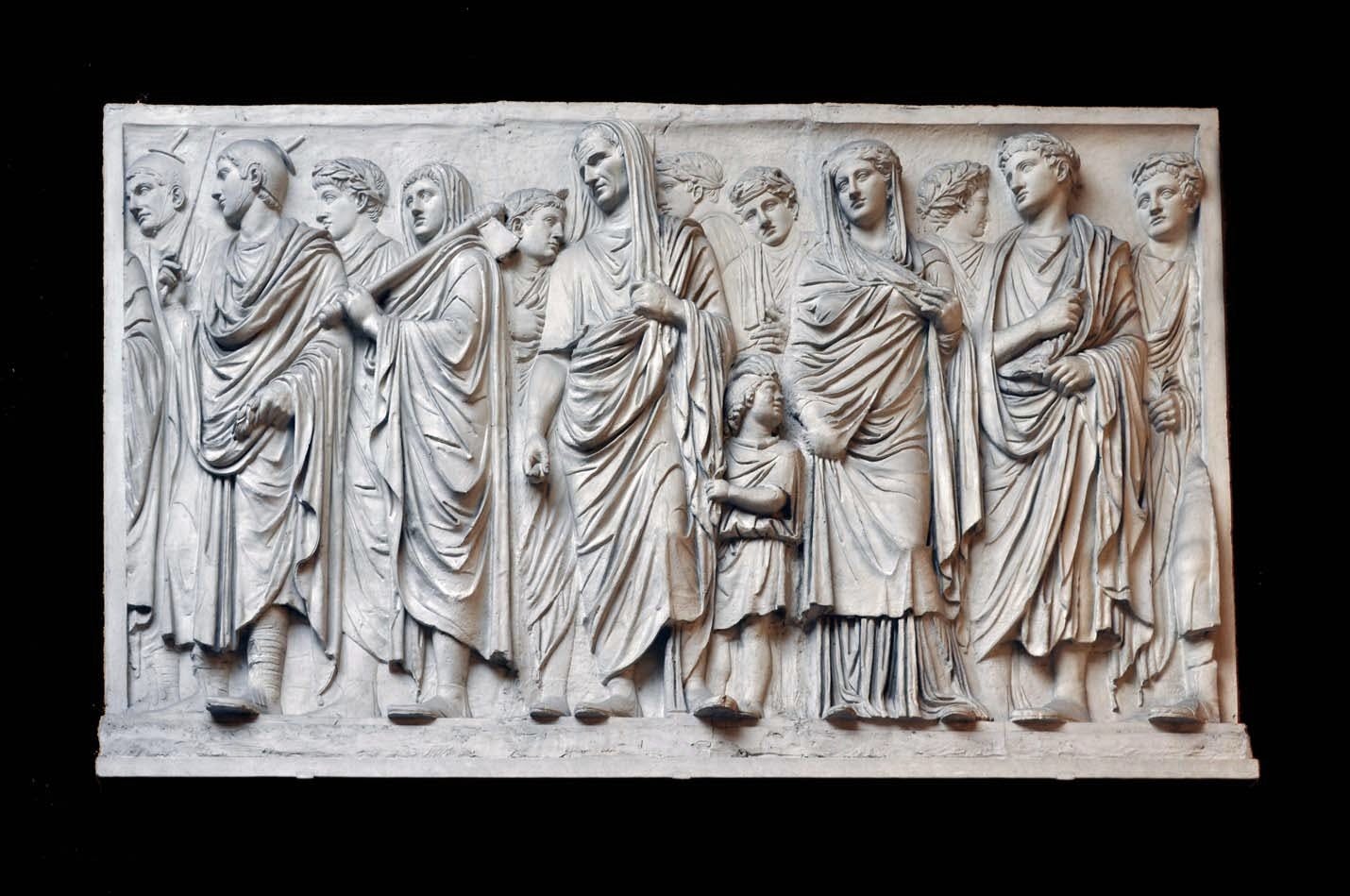Ara Pacis Augustae
Roman Art
The original artifact was found in Rome in 1568 at Palazzo Feretti-Fiano-Almagià. The following year it became part of the Medici collections and then moved to Villa Medici on the Pincio, from where it reached Florence at the end of the 18th century. Only in 1937, with the discovery and reconstruction of the Ara Pacis, they were sent to Rome.
The casts of the north, east and south sides (central panel) were made by the Art Institute of Porta Romana (Florence) from the nineteenth century, in the 1980s. Since then they have been located inside the museum rooms of the Uffizi. The right panel of the southern frieze was commissioned by the Uffizi to the same Institute in 2013.
The Ara Pacis was commissioned by Emperor Augustus to celebrate the victories in the military campaigns of Spain and Gaul. The altar, begun in 13 BC, was solemnly inaugurated on January 30, 9 BC, on the birthday of his wife Livia Drusilla. Originally the altar had to be entirely painted and completed with gold leaf.
The panels on the southern side (of which the casts 1346 and the cast with no inventory number) constitute the most important part of the entire decoration, since in it we find the members of the imperial family. Starting from the left you can recognize the flamines maiores, priests with the characteristic headdress surmounted by a metal tip, followed by the flaminius lictor who carries the sacred ax on his shoulder. Following, behind the emperor Augustus with his head veiled in the role of pontifex maximum, there are the members of the family: the son-in-law Agrippa, depicted with his head covered by the flap of the toga and with a roll of parchment in his right hand, the little Gaius Caesar, grandson and adopted son of Augustus, and a female figure with a veiled head and laurel wreath towards which the child is facing. It could be Giulia Maggiore, daughter of Augustus, or Livia, his wife.
The processional picture then continues with Antonia Minor, daughter of Mark Anthony and Octavia, sister of the princeps, who holds the little Germanicus by the hand, while she turns her gaze to her husband Drusus Major, in military clothes. Following are represented Antonia Maggiore with her husband Lucio Domizio Enobarbo and their children, Gneo Domizio Enobarbo and Domizia. On the sides of Lucio then, there are two men. The eldest has been identified with Mecenate or Sesto Appuleio. The two children at the center of the scene wear the toga praetexta, a dress worn by children up to 17 years of age, when they began to wear the toga virilis. They also wear the bulla around their necks, an amulet received nine days after birth and worn until they reach the adolescence. Gneo Domizio has a crown of laurel on his head and holds a volume in his left hand. The little girl, on the other hand, is wrapped in the palla, a feminine cloak, while around her neck she wears the lunula, a crescent-shaped pendant with the same apotropaic function as the bulla, which she only took off on her wedding day.
The cast no. 1345 shows the members of the ordo sacerdotum, characterized by the wishes distinguishable from the insignia of their power, and by the quindecemviri sacris faciundis, inaugurated by a camillus who wields the acrid with Apollonian symbols.
Finally, the cast no. 1344 reproduces the panel on the east side of the Ara. It is represented an allegory of the Golden Age: in the center sits a female figure with two cherubs on her lap. On either side of her lie two nymphs, one on a swan in flight, the other on a sea dragon, symbols of peace achieved on land and at sea thanks to the princeps.
Camin L., Paolucci F. (a cura di), A misura di bambino. Crescere nell’antica Roma. Catalogo della mostra, Sillabe, Livorno 2021, p. 149
Rossini O., Ara Pacis, Electa, Milano 2006
